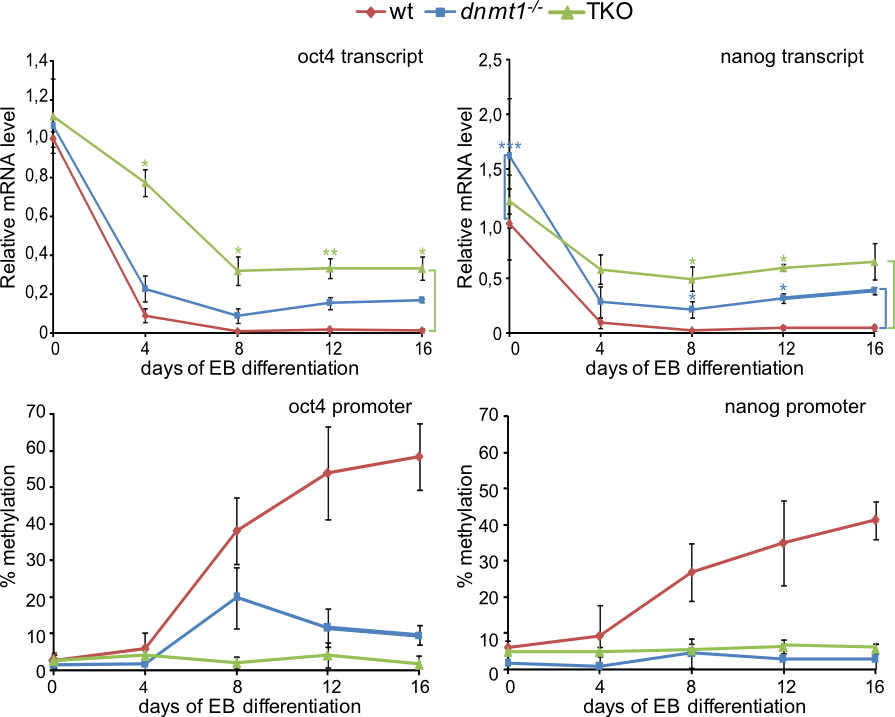Pluripotency and Differentiation
 Embryonic stem cells (ESCs) are pluripotent cells derived from the naïve epiblast of preimplantation blastocysts. Under appropriate conditions they can self renew indefinitely in the pluripotent state, as well as differentiate into any embryonic lineage, including germ cells, both in vitro and upon reintroduction in host embryos. These properties make ESCs a powerful and popular model to investigate the molecular bases of pluripotency and lineage commitment. Indefinite self renewal of mouse ESCs is sustained by LIF/JAK/Stat3, PI3K/Akt and Wnt signaling as well as suppression of the FGF/Erk and GSK3 pathways. These conditions support the expression of master transcriptional regulators of pluripotency, including Oct4, Nanog and Sox2. These transcription factors establish a core network that, in cooperation with epigenetic modifiers, non coding RNAs and the c-Myc transcriptional network, orchestrates the pluripotency expression program and suppresses differentiation programs. Recent data suggest that the same core pluripotency factors also play crucial roles in initial cell fate choices. Differentiation signals directly modulate Oct4 and Sox2 protein levels, leading to changes in their genome wide binding profiles and thus initiating lineage selection without prior activation of lineage specification factors.
Embryonic stem cells (ESCs) are pluripotent cells derived from the naïve epiblast of preimplantation blastocysts. Under appropriate conditions they can self renew indefinitely in the pluripotent state, as well as differentiate into any embryonic lineage, including germ cells, both in vitro and upon reintroduction in host embryos. These properties make ESCs a powerful and popular model to investigate the molecular bases of pluripotency and lineage commitment. Indefinite self renewal of mouse ESCs is sustained by LIF/JAK/Stat3, PI3K/Akt and Wnt signaling as well as suppression of the FGF/Erk and GSK3 pathways. These conditions support the expression of master transcriptional regulators of pluripotency, including Oct4, Nanog and Sox2. These transcription factors establish a core network that, in cooperation with epigenetic modifiers, non coding RNAs and the c-Myc transcriptional network, orchestrates the pluripotency expression program and suppresses differentiation programs. Recent data suggest that the same core pluripotency factors also play crucial roles in initial cell fate choices. Differentiation signals directly modulate Oct4 and Sox2 protein levels, leading to changes in their genome wide binding profiles and thus initiating lineage selection without prior activation of lineage specification factors.

